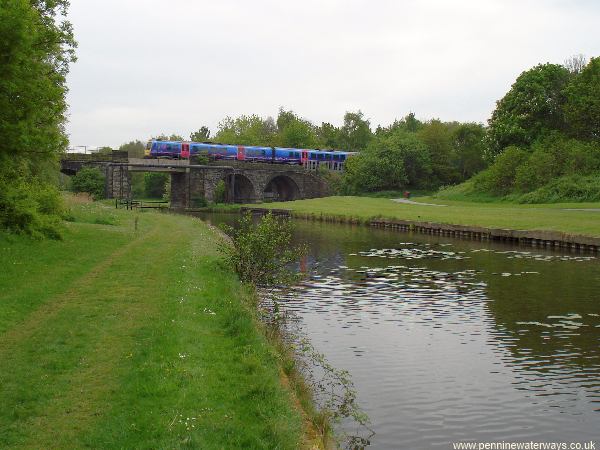
Known as the "Seven Arches", although it consisted of seven arches and one iron-girder span over the canal itself, this 1873 viaduct carries the Liverpool to Manchester via Warrington railway. It is thought that span across the canal originally had a lifting mechanism, to allow the masts of the sailing barges to pass through.
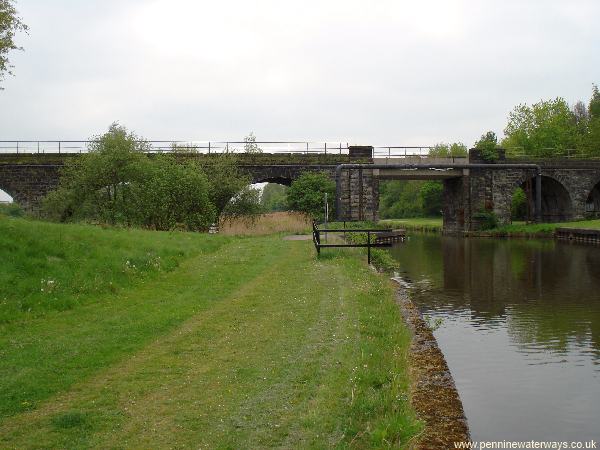
Part of the "Seven Arches".
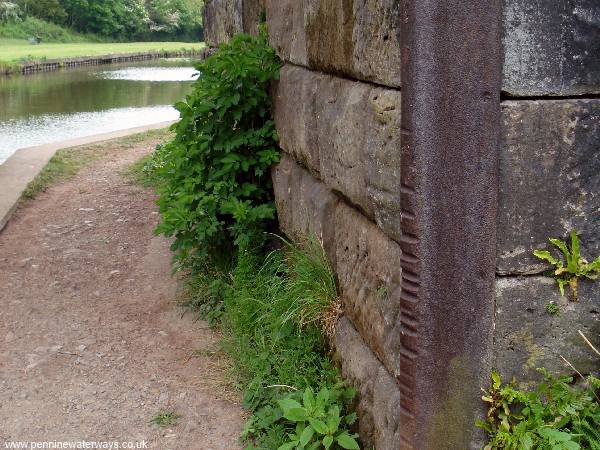
The stonework of the viaduct was protected from rope erosion by metal plates rather than the wooden rollers used elsewhere on the canal.
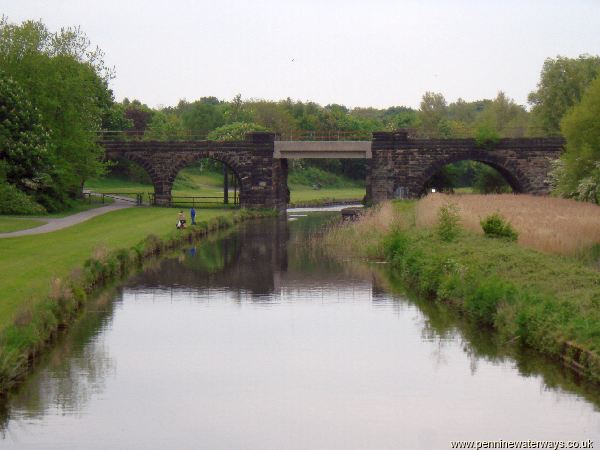
Looking back to "Seven Arches" viaduct. Because of subsidence, the original towpath has been closed here, but a detour is possible alongside the river, crossing the canal by the footbridge from which this photo was taken. Alternatively, walkers can keep to the west side between Bewsey Old Hall and Sankey Way.

Looking south from the footbridge. The towpath on the east side has been closed and the area behind it made into a wildlife reserve.
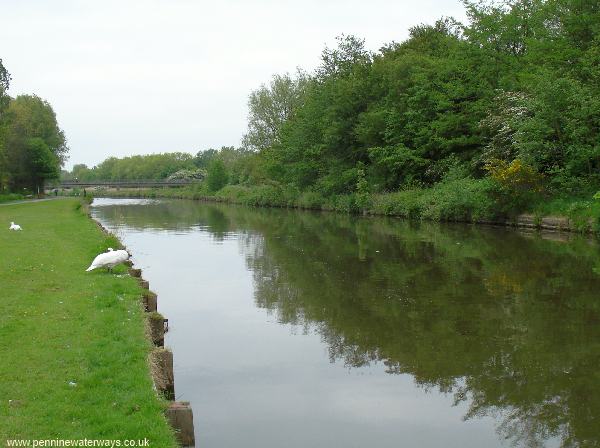
Looking back to the footbridge.
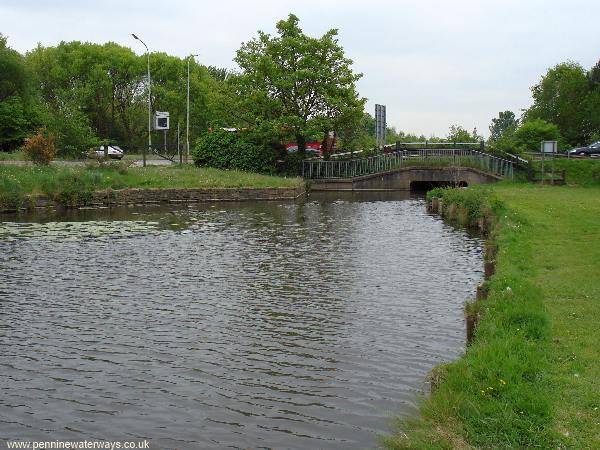
Sankey Way, Warrington, crosses the canal at a low level. Walkers can cross back to the left bank beyond this bridge. Although Sankey Way is a new road, the bridge is on the site of the former Buttermilk Swing Bridge.
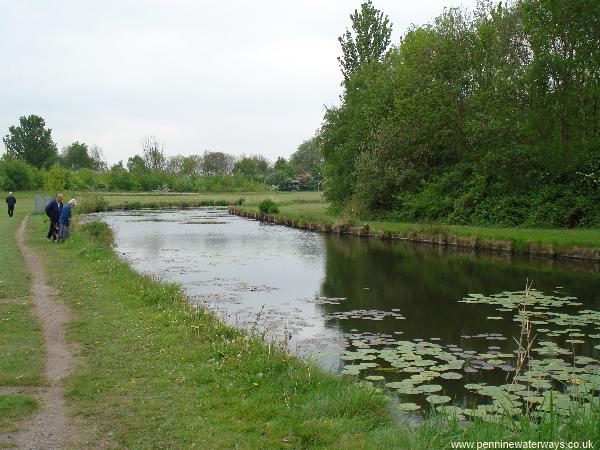
South of Sankey Way, the canal curves right towards Sankey Bridges.

Around the corner is another footbridge. On the west side of the canal here is the Butterfly Garden. Sections of railings along the left mark areas where the edge of the towpath has become unstable. The chimney of Fiddlers Ferry power station appears ahead in the distance.
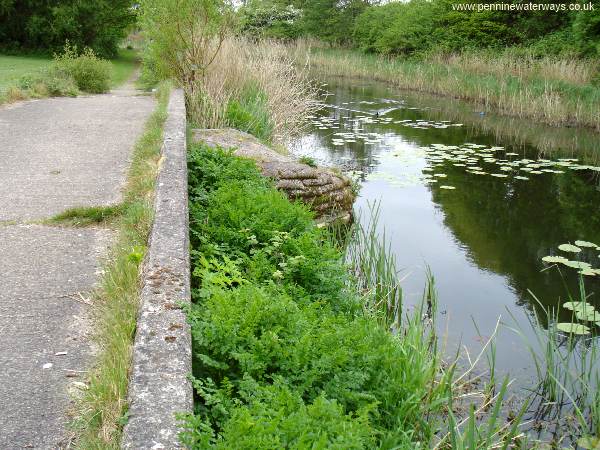
A concrete ramp on the towpath indicates the site of the entrance to a dry dock, now infilled, where boats were built.